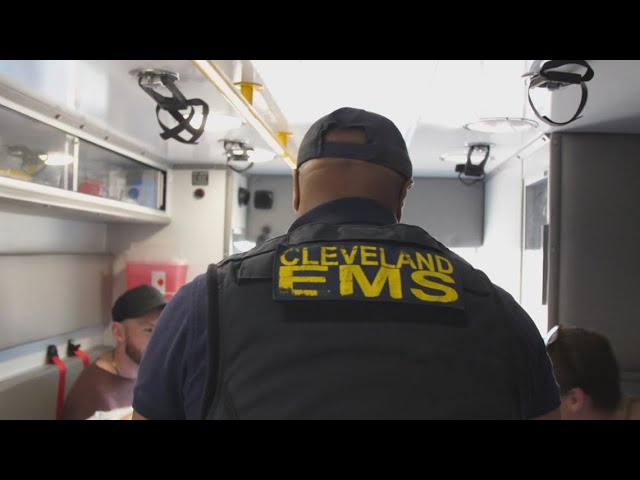CLEVELAND, Ohio — Concerns over emergency medical staffing shortages have led to a budget revision in Cleveland, with City Council advocating for the addition of 11 new EMS positions. The initial budget proposal from Mayor Justin Bibb did not include these positions, despite prior discussions about their necessity.
EMS Staffing Shortages and City Council’s Push for More Resources
Cleveland’s emergency medical services have been operating under increased strain due to staffing cuts made two years ago. In October, EMS leadership indicated they needed 11 additional paramedics to help restore previous staffing levels. However, when Bibb released his proposed budget in February, these positions were omitted.
This decision sparked criticism from the Cleveland Association of Rescue Employees, with Vice President Timothy Sommerfelt highlighting the urgency of EMS response times. “Cleveland can’t wait for an ambulance,” he stated, referencing the mayor’s previous campaign slogan.
City Council members, including Public Safety Committee Chair Mike Polensek, have stressed the importance of prioritizing EMS funding, labeling the issue as a matter of life and death. Council President Blaine Griffin and Bibb’s administration are now engaged in negotiations over the final budget, with council members arguing that funding EMS should be a priority.
Revenue Increases and Budget Adjustments
One factor influencing the debate is the city’s ambulance billing revenue. In 2022, Cleveland significantly increased ambulance service fees, raising base rates from $350-$500 to $750-$1,300. The revenue was intended to support EMS operations, but difficulties in collecting payments led to a substantial decline in funds.
In 2023, the EMS budget was reduced, cutting total personnel from 332 to 304 positions due to hiring challenges. Bibb’s 2025 budget proposal maintained staffing at 304, despite EMS leadership requesting 315 positions. Currently, EMS employs 292 personnel, with nine more trainees expected to start by the end of March. Union leaders argue that recent wage increases have improved recruitment efforts, making it feasible to restore positions that had been cut.
Investing in Emergency Medical Services and Community Programs
The proposed budget does allocate funds for new equipment, including ventilators and resources to develop a blood transfusion program. EMS leaders also hope to expand community outreach efforts, such as CPR and first aid training. However, Sommerfelt cautioned that without additional personnel, these initiatives could pull paramedics away from emergency response duties.
“Without increasing staffing, we’d have to take paramedics off 911 calls to support these programs,” Sommerfelt warned. The estimated cost to add 11 positions is about $1 million, a fraction of the city’s overall budget but a significant investment in public safety.
Addressing Billing Collection Issues
A key challenge in funding EMS has been the city’s inefficient billing collection. Despite the rate increases, revenue fell from $16.8 million in 2021 to just $4.1 million in 2024 due to staffing shortages in the billing department. To address this, Cleveland outsourced EMS billing to a private company in January 2025.
Initial results suggest the move is paying off. The new billing firm has collected $4.7 million in just six weeks, a dramatic improvement over previous years. The city now expects to collect between $15 million and $16 million in EMS revenue for 2025, with finance officials calling this a conservative estimate.
Final Budget Decisions Approaching
With budget talks ongoing, council members continue to advocate for reinstating the 11 EMS positions. Councilman Charles Slife expressed surprise that EMS leadership did not initially present their staffing request during budget hearings, but he and other council members are pushing for the positions to be added before the final budget is approved.
Polensek, a strong supporter of increased EMS funding, emphasized the need to invest in emergency services as a critical quality-of-life issue for Cleveland residents. As negotiations continue, the final decision will determine whether the city’s EMS workforce can meet growing demands and better serve the community in emergencies.
